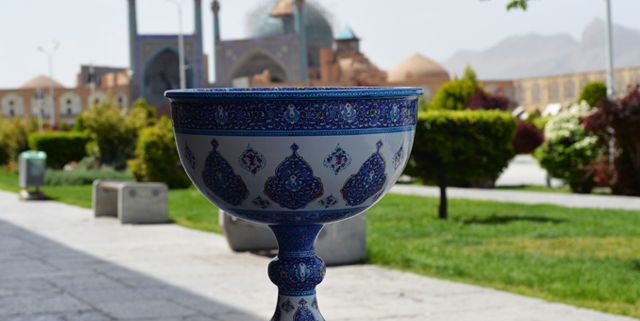Creative City
Isfahan the Creative City of Crafts: The Challenge of Remaining Creative
Since autumn of 2015 (the official declaration of Isfahan joining to UNESCO Creative City Network), terms like creative city, creative industries, and creative economy have been heard frequently beside the name of Isfahan. Isfahan city is elected to join UNESCO Creative City Network as the city of Crafts and Folk Art, and thanks to the extensive advertising campaign by Isfahan Municipality, the majority are informed about the event. Now a number of questions arise: what does really being a creative city mean? Why should a city like Isfahan join to such a network? And last but not the least, would the creative city title be forgotten gradually like any other titles of this historical city?
Creative City
The idea of creative city developed about 20 years ago in response to economic, social and cultural evolutions in European countries, when the cities had to reconsider and redefine their functions. From 2000 to 2002, after publication of the books “The Creative City: a toolkit for urban innovators”, (2000) by Charles Landry, and “Cities and the Creative Class”, (2002) by Richard Florida, the concept of “creative cities” became popular among academics and policy-makers concerned with the future of cities.
The concept when introduced was seen as aspirational; a clarion call to change attitude, encourage open-mindedness and imagination, but gradually was applied to urban planning. Creative city idea aimed to change the dominated culture and structures of modern cities. The common philosophy which linked the contrasted ideas by the theorists of creative cities, was that every city regardless of its size and function, has its own chemistry and its own definition of creativity.
Every city has a competitive advantage in a special creative industry, and its creativity can be driven from a variety of sources. The UNESCO Creative Cities Network (UCCN) was created in 2004 to promote cooperation with and among cities that have identified creativity as a strategic factor for sustainable urban development (Rosi, 2014), and it covers seven creative fields: Crafts and Folk Arts, Media Arts, Film, Design, Gastronomy, Literature and Music. The 116 cities from 54 countries has currently made up this network (UNESCO, 2016). From Iran two cities of Rasht and Isfahan are joint to this network for gastronomy and crafts and folk arts, respectively.
Becoming a creative city of craft and joining to this network, can create a global brand for the city, which leads to attraction of investment flows and tourists- an image which has been formed based on the city real potentials -, and also can promote the status of crafts and craft artists in Isfahan through the mutual cooperation with other members of the network.
Isfahan has long been recognized as the center of traditional Iranian handicrafts production in the world, and one third of all branches of crafts in the world, is belong to this city. Isfahan handicrafts are the manifestation of creativity and culture of people who have lived in different historical periods in the city. From a long time ago handicraft artists of Isfahan have been pre-eminent in crafting and created masterpieces out of wood, metal and stone. Today, the masterpieces can play a role in forming a unique image for the city of Isfahan.
Joining Isfahan to UCCN as a city of crafts and folk arts, is the first step to take advantage of this unique opportunity, however, despite the credibility of this international title, only possession of this title would not guarantee the positive changes in the current status of the city.
There is no single prescription to become a creative city and more importantly remain a creative one, but it’s noteworthy that like any other creative city, there is a need to identify the local cultural capacities and local distinctions of Isfahan, and then according to this information a clear vision for development should be defined. It is worth to mention that a creative city is strategically principled and tactically flexible, and how it can be achieved? By developing a clarity of purpose and ambition, fostering visionary individuals and organizations, being open-minded and willing to take risks, involving social stakeholders in decision-making process.
Creative cities are dynamic places and full of spirit of life. They are places of possibility, ‘can do’, and instead of hearing “no, because of ….” you would hear “Yes, if ….” Citizens’ voice would be heard and they are encouraged to put in practice their ideas. People are informed about political, social and cultural issues in the city and are involved in city development. Creative cities are interactive places where all stakeholders enjoy an equal opportunity to express their creative ideas for a making a great city (landry, 2015).
The only factor ensures being a creative city is providing a context for citizens, businesses and creative institutions to develop. According to Landry (2012) people are the most valuable assets of modern cities and their expectations, ambitions, and creativity are the key of successes in the city.





Leave a Reply
Want to join the discussion?Feel free to contribute!